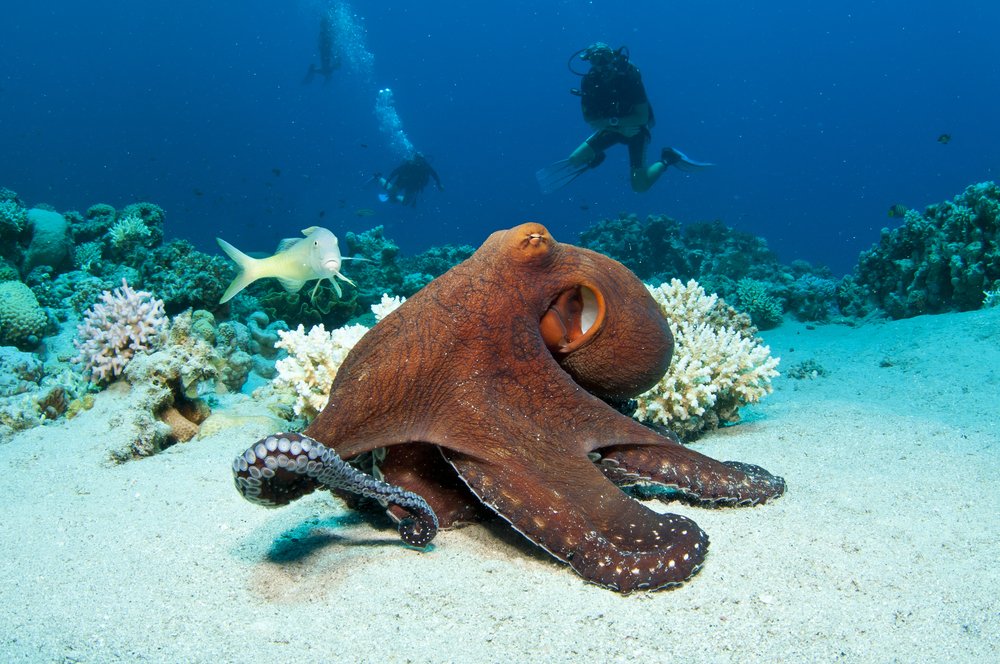Grouping All The Living Creatures in the OCean
According to the scientists, more than one million species of living creatures inhabit the world’s oceans. That’s quite a lot, isn’t it? It’s actually not so surprising, knowing that the oceans occupy more than 70% of our planet. In fact, the ocean is the largest ecosystem on Earth, hosting an incredible 90% of the planet’s wildlife. So let’s dive in and see what some of these creatures are!
Marine Mammals
The diverse group of marine mammals can be found in marine ecosystems around the world. These animals have developed unique physical adaptations that allow them to thrive in the harsh marine environment of extreme temperatures, depths, pressure, and darkness. Marine mammals are a wide group that can be classified into four different sub-groups:
cetaceans – whales, dolphins, and porpoises,
pinnipeds – seals, sea lions, and walruses,
sirenians – manatees and dugongs, and
marine fissipeds – polar bears and sea otters.
Curious fact: The blue whale, which is as long as two school buses, is the largest animal ever to live on Earth! Dolphins, porpoises, and sea lions are also ocean-dwelling mammals.
Fish
The world’s oceans are home to more than 20,000 species of fish that come in all shapes, sizes, colors and live in dramatically different depths, temperatures, and distances from the shore. Here are some of them: Atlantic cod, mackerel, trout, Atlantic salmon, tuna, whale shark, red mullet, mahi mahi (dolphinfish), anchovy, haddock, red sea bream fish, gold line fish, pallack, ocean sunfish, red snapper, clown fish, bluefish, dragonfish, lanternfish, anglerfish, and many, many more. Learn more about the most common fish here.
Reptiles
This group includes sea turtles, sea snakes, saltwater crocodiles, and marine iguanas. Each subgroup has a variety of species. For example, there are many different species of sea turtle, ranging in size from only 2 feet to the real giants at over 6 feet in length! Read more about each species here.
Crustaceans
Known as the insects of the sea, crustaceans are a wildly diverse group of invertebrate animals such as shrimp, krill, crabs, and lobsters. The commonality between them is their hard exoskeleton or shell, two pairs of antennae, two eyes (often on stalks), a pair of mandibles used for eating, and gills. They play an extremely important role in the ecosystem as they serve as vital food for both marine animals and humans.
Mollusks
There are more than 100,000 types of mollusks! Their bodies can be either soft or protected in shells and that’s why they are classified in three different categories:
gastropods – snails and slugs (which include tens of thousands of species),
cephalopods – squids and octopuses, and
bivalves – clams, oysters, and mussels.
Cnidaria
These are water animals that have a simple and symmetrical body with a mouth opening surrounded by stinging tentacles that help them catch prey. Jellyfish, coral, and sea anemones are some of the representatives of that group.
Echinoderms
This group of animals lives on the ocean floor and examples include starfish, brittle stars, echinoids, sea cucumbers, and sea lilies. They are grouped together because they are all invertebrates that have spiny or bumpy skin and radial symmetry.
Plankton
Coming from the Greek language, the word plankton means “wanderer” or “drifter” and refers to the countless super tiny living things that float and drift in the world’s oceans. They include plants, animals, and other kinds of organisms, and all together they play a vital role in the food chain that supports fish and other sea creatures—and the people who eat them.
Algae
With more than 27,000 different types of algae, they are neither plants nor animals. They produce much of our planet’s oxygen that humans and animals need to breathe. The most popular algae examples are the various types of seaweed—learn more about them in this article.
Seagrass
Often confused with seaweed, seagrasses are the only flowering plants that grow in marine environments. There are about 72 species of fully marine seagrasses, all of which have roots, stems, and leaves that produce flowers and seeds.









